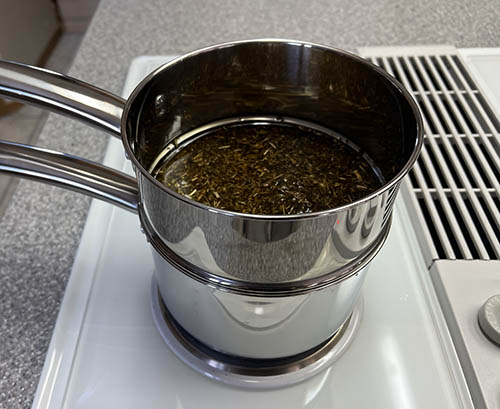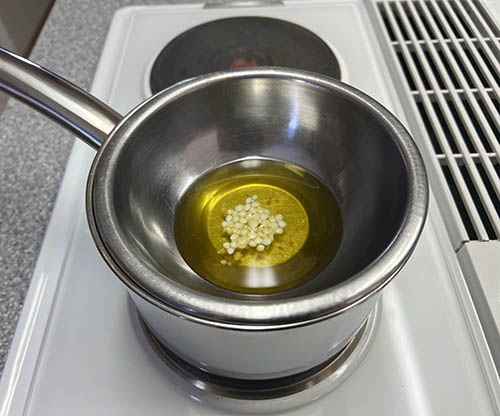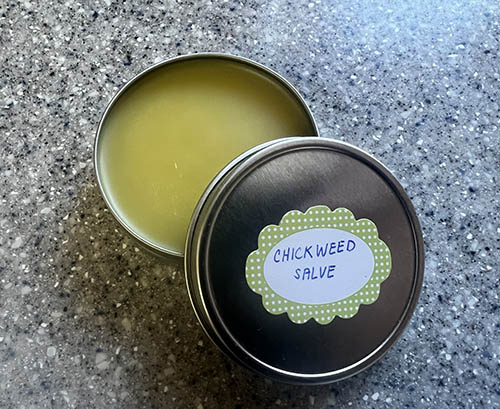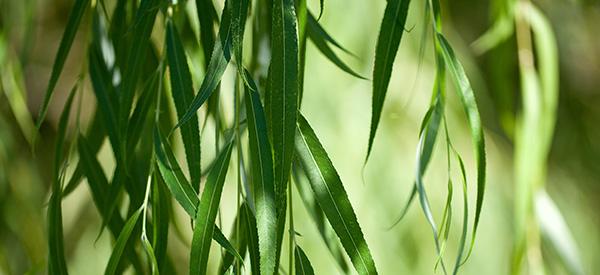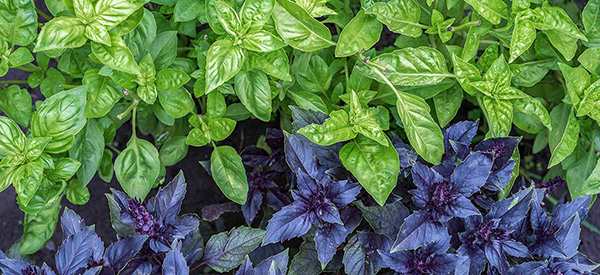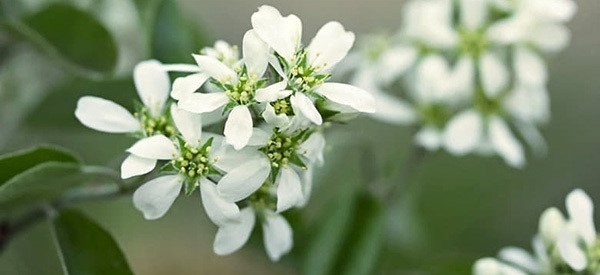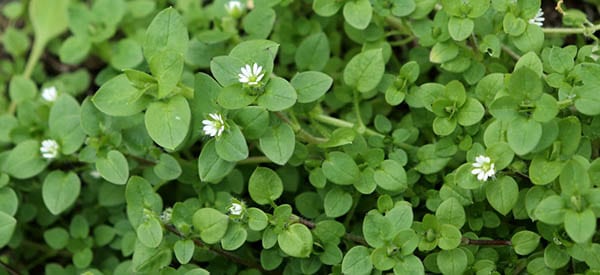
Chickweed
Common chickweed (Stellaria media) is a common mat-forming medicinal garden weed. It is one of the first weeds that sprout in spring, making it a cool-season annual plant. Chickweed seeds were traditionally used to feed birds and that was how it earned its name. As a vegetable crop, all parts of the chickweed are edible except for the roots. It can be eaten raw, chopped into pieces for salad, or cooked like spinach.
Some people may consider chickweed as a troublesome weed. However, it has many uses that make it a valuable crop. Aside from being a poultry feed, chickweed is nutrient-dense and packed with healing properties. It is particularly used in treating skin conditions and has promising attributes for digestive health.
Chickweed existed for many centuries as a vegetable and bird feed, but little was known for its medicinal value. Herbalists overlooked its potential health benefit until English physician Nicholas Culpeper refuted it. He discovered its unsurpassed ability in lowering fever and infections. In Chinese medicine, chickweed is a documented medicinal plant for the treatment of gastritis and dermatitis.
Where Chickweed Is Found
Chickweed originated in Europe and became widespread all over the world for its adaptability. It typically grows in moist soil, growing lush and green, when it is fertile. Chickweed can grow anywhere and it can even tolerate flood and standing water. With its aggressive reseeding and vegetative spreading attributes, it is considered a disturbance in many lawns and gardens.
How To Identify Chickweed
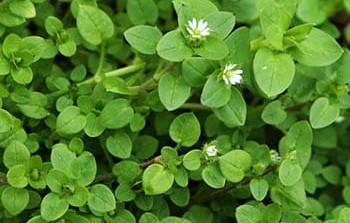
Common chickweed grows tiny white star-shaped flowers that make it distinguishable in the genus Stellaria. Its flowers earned it its moniker, “snow in the summer,” as they dot the plant from spring to autumn. Its leaves and flowers open up in good weather and fold themselves when it rains. The leaves also fold up at night to protect the new shoots.
Leaves. Chickweed is a deciduous semi-evergreen plant with green leaves that turn brown or copper in autumn. The leaves are opposite, simple, and succulent. They are egg-shaped but their sizes vary, ranging from ½ to 1 inch long, and up to half-inch wide. The leaves are generally smooth but fringed with tiny hairs near the base.
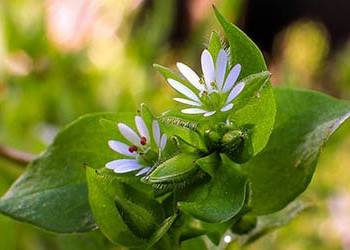
Flowers. The tiny, white, star-shaped flowers of chickweed grow in cyme inflorescence. It has five petals that are lobed, so they appear as ten petals, with a round, light green ovary or center. Stamens are usually 3 to 5 (up to 8), with yellowish anthers that turn reddish-violet as they mature.
Fruits and seeds. After the flower blooms and matures, cylindrical seed capsules replace them. Each capsule is light brown with curved rows along its upper rim. It contains several reddish-brown seeds that appear almost flattened but with bumpy surfaces.
Roots. Chickweed is a prolific grower with a slender tap root and shallow, fibrous roots. The roots can grow from the nodes of the stem to form a thick and springy mat over the ground.
Stem. Chickweed has succulent stems that are either green or burgundy in color. They are multi-branched and erect. It ascends from the creeping base. A row of hairs on alternate sides of the nodes forms a white line along the stem surface.
⇒ The Complete Map of Edible Plants: Find Out What You Have in Your Area! (Video)
Stellaria media belongs to the Caryophyllaceae or carnation family. There are many plants called chickweed but Stellaria media is identified as the common chickweed. Common chickweed is differentiated from its lower leaves and longitudinal hairs in the internodes.
The plant is also known as chickenwort or winterweed. It also goes by the name craches and maruns.
The name Stellaria media is a Latin word that translated to “star in the midst,” a clear reference to this plant’s flowers.
There are two varieties of the common chickweed: media var. maritima and media var. media.
How To Grow Chickweed
Chickweed is a highly resilient and adaptable plant that can grow in a variety of climate conditions. A chickweed plant multiplies through vegetative root reproduction and re-seeding. Chickweed is easier to grow than it is to eradicate. Thus, it poses a problem in some places once it starts spreading.
⇒ Plant Identification Guide – 400 Wild Plants That You Can Forage For (Video)
Herbicides are used to control the spreading of chickweed. But, the most sustainable and sensible way of curbing it is pulling the plant for potherb and medicinal use.
Growing Chickweed From Seeds
You may forage chickweed seeds in the wild if you want to grow them in your garden. However, there are a lot of plants that are identified as chickweed. If you are unsure of the chickweed specie in your area, it is best to just buy common chickweed from online seed stores.
Chickweed is not a demanding plant and it can be grown throughout the year. It will also do well in all types of soil but will grow best in loamy and fertile soil.
To prepare the soil, till it and add organic materials like manure or home-made compost. Sow the seeds at a rate of three seeds per inch. Lightly cover them with soil and mist them with water.
Chickweeds germinate easily and the seeds will sprout in less than a week.
Thin the seedlings when they reach about three inches tall while keeping 5-inch of space between them. Water the established plants only during a long period of dry spells.
Growing Chickweed From Roots
The leaf node of chickweeds produces roots that enable it to spread. Grow a new patch of the plant simply by digging up a clump and planting it directly on the soil. The clump will grow a new taproot and branch into fibrous roots to re-grow new plants.
Chickweed self-pollinates and spreads by re-seeding. Thus, if you already have a patch, it will take care of itself and reproduce to form a dense mat in no time.
If you want to control its growth, you can plant chickweed in containers instead. They look best for hanging pots or on windowsills.
Plant Care And Maintenance
Chickweed rarely needs attention when its seeds or roots touch the soil. Although considered a weed, it is forgiving and does not compete when grown with other plants. Growing other plants in gaps where you don’t want chickweed to grow is another technique for controlling its spread.
Chickweeds thrive lushly once they meet these growing conditions:
- Moist to mesic conditions
- Fertile loam soil
- Nitrogen-rich soil
- Regular watering during a drought
- Full sun to partial shade
Hot To Harvest Chickweed
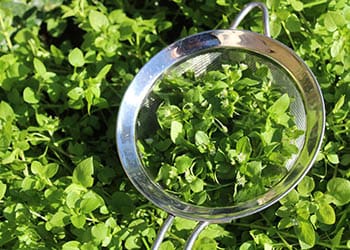 Chickweed is available for harvest throughout the year for its microgreens or tender stem and leaves. All of its above-ground parts are edible, so you can snip them off as you like.
Chickweed is available for harvest throughout the year for its microgreens or tender stem and leaves. All of its above-ground parts are edible, so you can snip them off as you like.
When harvesting, you can cut off the entire plant leaving about 2 to 3 cm of the stem above the roots. The lower stem can still grow new leaves that will be available for harvest the following week.
It is possible to store chickweed for future use by drying the young plants. Bundle the plants into small batches and tie them around the stalk. Hang the bundles to air dry in a cool and dry place or place them in a dehydrator.
It may take the chickweed about a week to dry completely because of its water content.
Once dried, pluck the leaves off the stem and store them in a clean mason jar. Keep the jar away from sunlight so that the leaves can last for up to a year.
What Chickweed Is Good For And Natural Remedies Made From It
Common chickweed is a plant with many health benefits. It is mainly used for skin diseases like eczema, roseola, and psoriasis. It has a cooling effect beneficial for dry skin, bug bites, and irritations.
As a cooling herb, chickweed is traditionally used for lowering body temperature in fever.
Over the years, chickweed has been used for digestive issues. It has a laxative property that can treat constipation while some use it in losing weight and managing obesity.
⇒ The Only Survival Food You Should Harvest This Winter (Video)
Additionally, chickweed is rich in fiber and minerals, making it a supportive supplement for good digestive health. It improves digestion and balances the gut bacteria that in turn improves immune health.
Chickweed has anti-inflammatory properties that can soothe both internal and external inflammations. Externally, it is applied as a poultice to boils, burns, and sores. When taken internally, it reduces inflammations that cause muscle pains, osteoarthritis, irritable bowel syndrome (IBS), and other related ailments.
The diuretic property of chickweed is useful in water retention and removing toxic waste in the body. It further helps maintain urinary health and ward off infections.
Chickweed contains saponins, which act as an expectorant. Its action is notable in treating various respiratory diseases, especially in expelling mucus and phlegm. As it relieves inflammation in the respiratory tract, it also clears the infection speeding up the body’s recovery.
Common chickweed is pack-filled with other nutrients like Vitamins A, B, and C, iron, magnesium, and zinc. These are important in boosting the overall immune health to protect the body from diseases. It has flavonoids, phytosterols, and other antioxidants that fight off damaging free radicals.
Assessments proved the pharmacological activities of chickweed as:
- Anti-inflammatory
- Antioxidant
- Antimicrobial
- Anti-obesity
- Anti-diabetic
- Anxiolytic or tranquilizing
Specifically, the medicinal use of chickweed is found to be useful in the following: 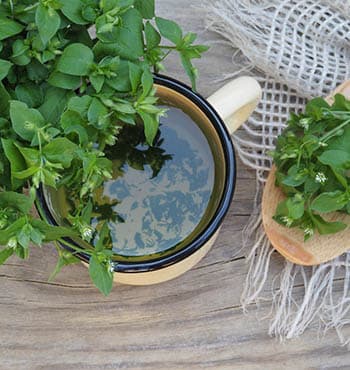
- Skin problems
- Respiratory and pulmonary diseases
- Digestive issues
- Urinary problems
- Joint and muscle pains
- Inflammations
- Diabetes
- Obesity
- Immune health
- Fever
- Ulcers and wounds
- Cholesterol
- Scurvy
What Parts Of Chickweed Are Used For Remedies
The entire plant is useful as medicine including its roots and seed pods.
Fresh chickweed plants can be prepared as a decoction, infusion, or tea. The dried leaves are powdered and boiled for drinking to alleviate internal health issues.
The crushed leaves of chickweed are applied topically for use in skin problems and aching joints. When boiled, chickweed water can be used to bathe the affected area.
For medicinal applications, chickweed can be used in the form of: oral supplement, tincture, oil, ointment, salve.
All-Purpose Chickweed Salve
Ingredients
For the infused oil:
- 25 grams of dried chickweed
- 6 fl oz olive oil
For the salve:
- 1.75 fl oz chickweed oil
- 2 tsp beeswax
Steps:
For slow infusion:
- Prepare the infusion by filling the mason jar with chickweed herb.
- Pour the oil and allow the leaves to fully submerge in the bottom of the jar.
 Cap the jar and put it in a dark location for 6 weeks, shaking the jar regularly. After 6 weeks, strain the infusion into the glass container.
Cap the jar and put it in a dark location for 6 weeks, shaking the jar regularly. After 6 weeks, strain the infusion into the glass container.
For fast infusion:
- Combine the herb and oil in a double boiler. Make sure the oil covers the herbs totally.

- Heat on low for at least 2 hours. Always check that the double boiler has enough water all the time to ensure that it is heating properly.
- Strain the mixture into a clean glass jar. Cool.
For salve:
- Heat water in a double boiler at medium.
- Add chickweed oil and beeswax. Stir until the beeswax melts completely.

- Remove from heat and pour the salve into a tin container and let cool.

How To Use This Remedy
Chickweed salve can be used for a variety of skin problems. Use it for itchy skin, rashes, eczema, or dry skin. The product is safe for children and can be used for soothing diaper rashes and minor cuts.
What Plants Resemble Chickweed
| Features | Common Chickweed (Stellaria media) | Clammy Chickweed (Cerastium glomeratum) | Flowering Spurge (Euphorbia corollate) |
|---|---|---|---|
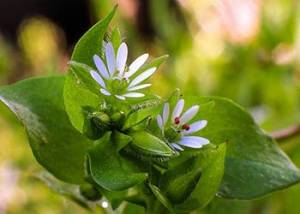 | 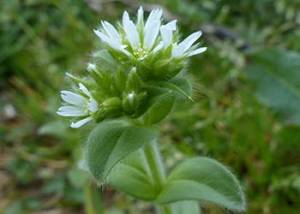 | 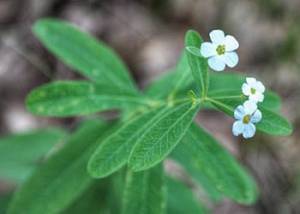 | |
| Size | 4 – 8 in | 2 – 6 in | 12 – 24 in |
| Leaves | Green to brown; oval; opposite; simple; succulent | Green/gray; oval; simple; opposite; sticky hairs on both sides | Green; opposite; oblong |
| Flowers | White; tiny; star-shaped; cyme | White; tiny; star-shaped; cyme | White; cup-shaped; cyme |
| Fruits/Seeds | Brown capsule with ridges; cylindrical; reddish-brown seeds | Capsule with tiny teeth | Green capsule; ovoid seeds |
| Stem | Green/burgundy; erect/ascending; white line of hair on the surface | Green/purple; erect; hairy; sticky | Green; erect; smooth |
| Scent | Menthol | Strong smell | No fragrance |
Warnings And Cautions
Raw chickweed contains saponins that are toxic when taken excessively. However, it is safe for consumption in moderate amounts. Cooking removes the saponins making it almost negligible when taken as cooked vegetables.
Chickweed is safe for topical use, even in children.
Presently, there is no reliable information on its safety in pregnant and breastfeeding women. It is best to stay on the safe side and avoid taking chickweed as an herbal supplement.
Before taking chickweed or other herbal supplements, consult your doctor especially if you have a medical condition. The dosage for chickweed supplements depends on the age, health, and condition of the patient. Only a qualified healthcare professional can give you sound advice on its dosage, safety, drug interactions, and potential risks.
You may also like:
DIY Skin Soothing Chickweed and Vinegar Bath for Rashes
The 10 Medicinal Seeds You Should Plant for a Complete Homemade Pharmacy (Video)
Beat Dry Winter Skin with This Homemade Salve








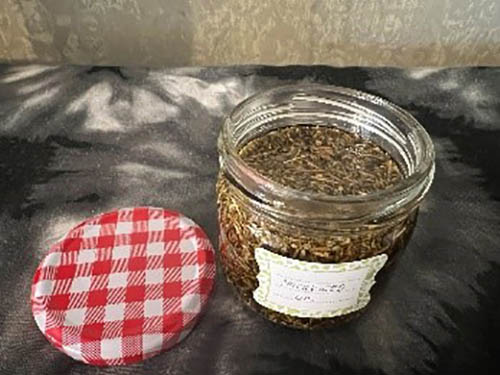 Cap the jar and put it in a dark location for 6 weeks, shaking the jar regularly. After 6 weeks, strain the infusion into the glass container.
Cap the jar and put it in a dark location for 6 weeks, shaking the jar regularly. After 6 weeks, strain the infusion into the glass container.